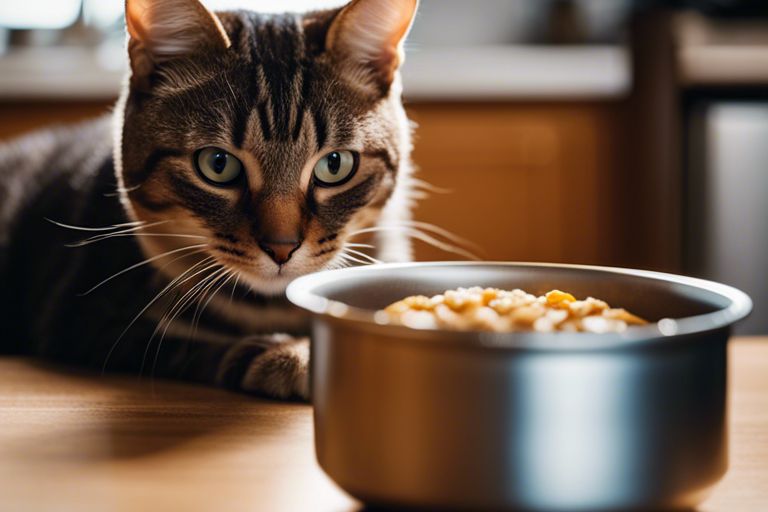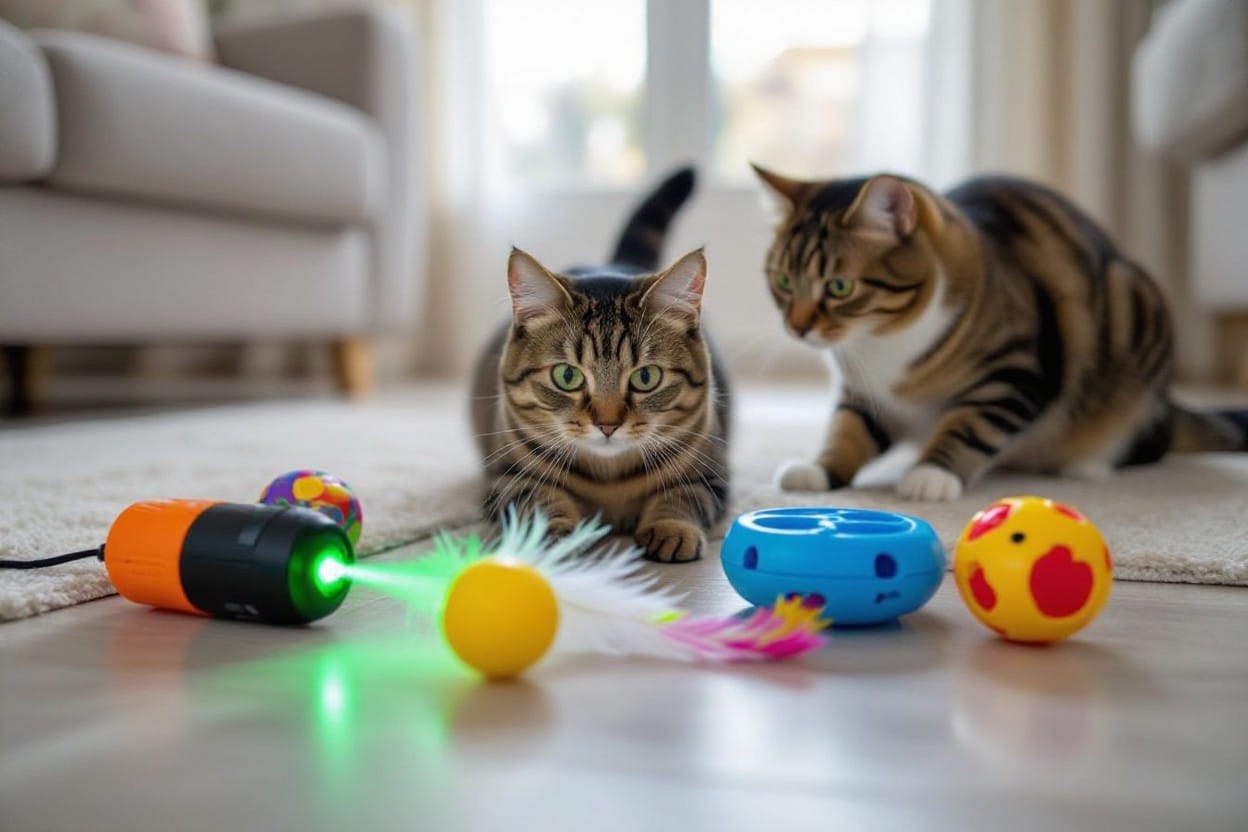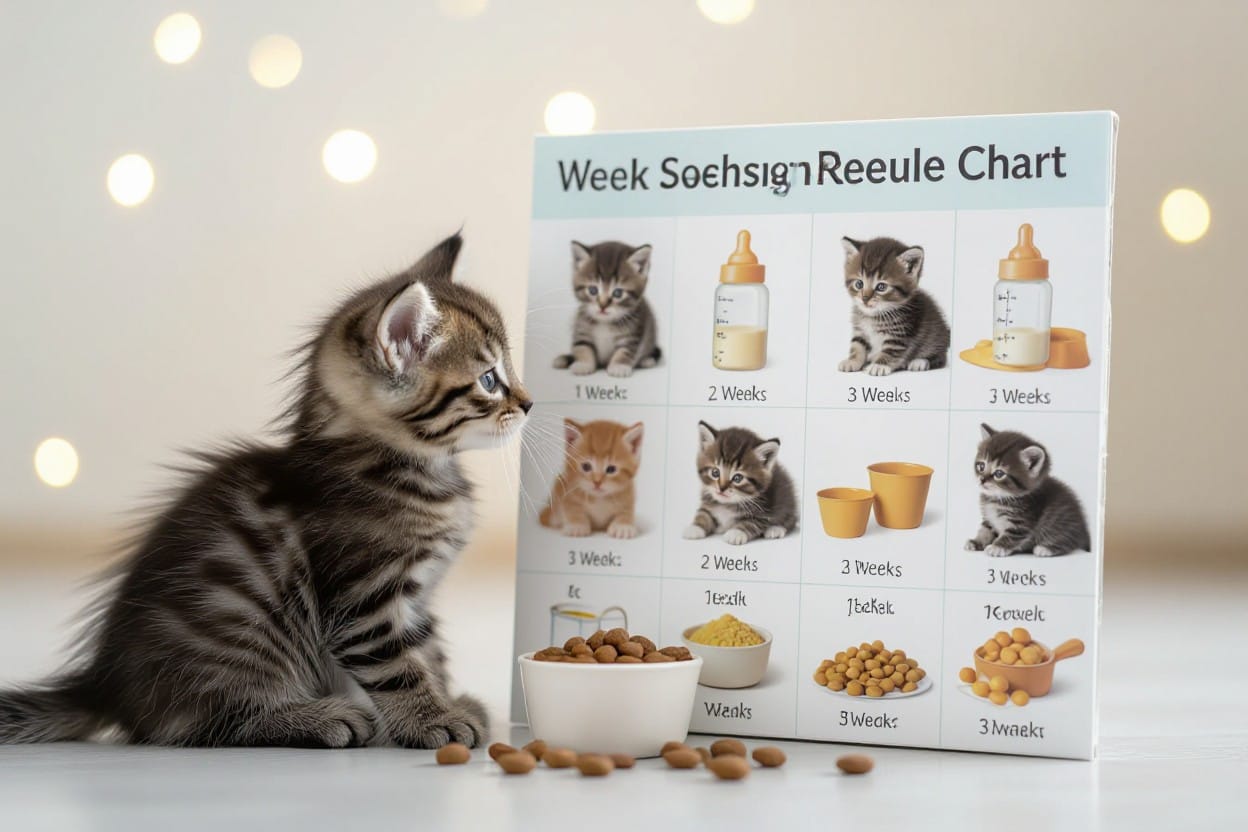Diet transitions for cats require careful planning and a gradual approach to ensure their health and happiness. Here are the steps and tips you need to smoothly transition your feline friend to a new diet, whether for health reasons or simply to switch up their meals for variety. With the right strategy and patience, you can help your cat adapt to their new food without any digestive upsets or mealtime struggles.
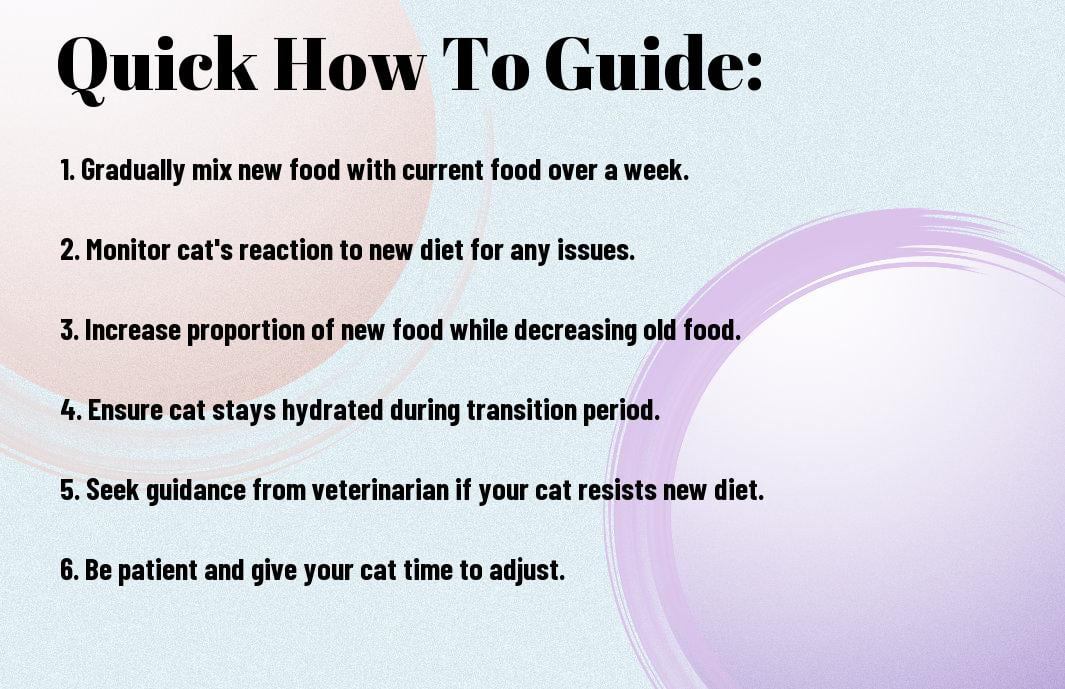
Assessing Your Cat’s Current Diet
Analyzing Nutritional Content and Health Implications
It is necessary to evaluate your cat’s current diet to determine its nutritional content and overall health implications. Look at the ingredients list on the cat food packaging to understand the key components of the diet. Ensure that the food provides a well-balanced mix of proteins, fats, carbohydrates, vitamins, and minerals necessary for your cat’s overall health and well-being.
Recognizing Signs that Indicate a Diet Change is Necessary
An important aspect of assessing your cat’s current diet is recognizing signs that indicate a change may be necessary. Look for symptoms like lethargy, excessive weight gain or loss, dull coat, digestive issues, or changes in bathroom habits. These signs could indicate that your cat’s current diet is not meeting its nutritional needs.
Another important signal that your cat may need a diet change is if it consistently refuses to eat the current food. Cats are known for being picky eaters, but a prolonged refusal to eat could indicate that the food does not agree with your cat’s taste preferences or that it is not providing the necessary nutrients.
Choosing the Right Diet for Your Cat
Factors to Consider When Selecting a New Diet
One of the most crucial considerations when transitioning your cat to a new diet is their age and life stage. Kittens, adults, and senior cats have varying nutritional needs, so selecting a diet that aligns with your cat’s life stage is important. Other factors to take into account include any existing health conditions your cat may have, such as obesity, allergies, or kidney disease. These conditions may require a specific diet tailored to your cat’s health requirements.
- Ensure the new diet provides a balanced nutrition suitable for your cat’s age and health status.
- Consider the ingredients in the new diet and whether they meet your cat’s dietary preferences and restrictions.
Knowing what suits your cat best will help you make an informed decision when choosing their new diet.
Tips for Consulting with a Veterinarian on Dietary Choices
There’s no substitute for professional advice when it comes to selecting the right diet for your cat. Veterinarians are trained to assess your cat’s unique health profile and dietary needs. When consulting with your veterinarian, provide them with detailed information about your cat’s current diet, eating habits, any existing health issues, and any specific preferences your cat may have.
- Discuss any concerns or goals you have for your cat’s diet with your veterinarian to ensure a holistic approach to their nutrition.
Knowing the importance of expert guidance in making dietary choices for your cat is key to their overall health and well-being.
Selecting the Right Transition Method
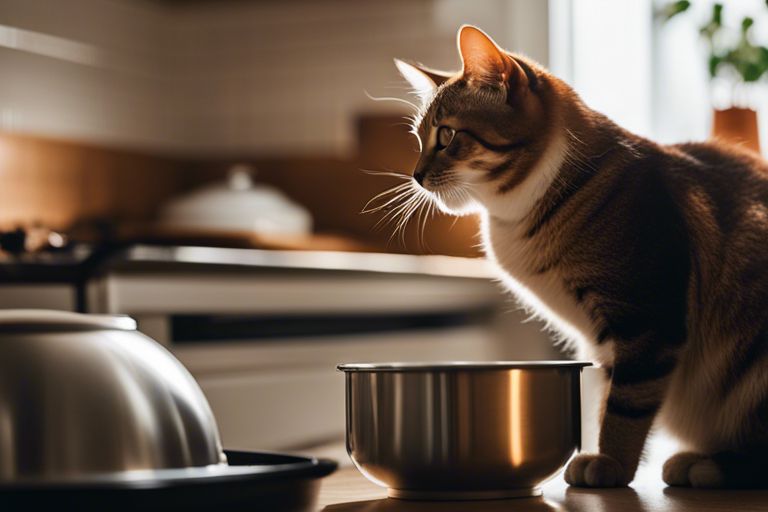
Preparing for the Transition
How to Create a Transition Plan
You are launching on a significant change in your cat’s diet, and it’s crucial to plan the transition carefully. Start by selecting the new cat food you want to introduce and familiarize yourself with its ingredients and nutritional value. It’s best to choose a high-quality cat food that meets your feline friend’s specific dietary requirements. Once you have the new food, gradually introduce it into your cat’s current diet to avoid digestive upset.
The Role of Consistency and Routine in Diet Change
Transitioning your cat to a new diet requires consistency and routine to help your pet adjust successfully. Cats are creatures of habit and can be sensitive to changes in their environment, especially when it comes to their food. Maintaining a consistent feeding schedule and serving meals in the same location can help your cat feel more secure during the transition period.
For instance, try to stick to the same mealtimes each day and avoid suddenly changing feeding times. Additionally, keep your cat’s water bowl in the same place and ensure it is always filled with fresh water. These small but important details can make a big difference in helping your cat adapt to their new diet more smoothly.
Introducing the New Diet
Step-by-Step Guide to Introducing New Foods
Not all cats are open to immediate changes in their diet. To successfully transition your cat to a new diet, you’ll need to introduce the new food gradually. This will help prevent any digestive upsets and increase the chances of your cat accepting the new diet.
| An Example Transition Plan | Day |
| Current Food | Day 1 – 3 |
| 75% Current, 25% New Food | Day 4 – 6 |
| 50% Current, 50% New Food | Day 7 – 9 |
| 25% Current, 75% New Food | Day 10 – 12 |
| New Food | Day 13 onwards |
Monitoring Your Cat’s Acceptance and Health during the Transition
If your cat shows any signs of reluctance to eat the new food, such as avoiding it or picking at it, slow down the transition process. It’s vital to monitor your cat’s behavior and health during this period to ensure they are adjusting well. Keep an eye on their litter box habits, energy levels, and overall demeanor.
It is not uncommon for cats to experience mild digestive upsets when transitioning to a new diet. However, if your cat displays persistent symptoms like vomiting, diarrhea, or lethargy, consult your veterinarian immediately. Your vet can provide guidance on whether to continue with the transition or make adjustments based on your cat’s health.
Dealing with Challenges in the Transition Process
How to Handle a Cat’s Resistance to New Food
The transition to a new diet can sometimes be met with resistance from your cat. Cats are creatures of habit, so changing their food abruptly can lead to them rejecting the new diet. To address this, gradually introduce the new food by mixing small amounts with their current diet. Over time, increase the proportion of the new food while decreasing the old until they have fully transitioned.
Tips for Managing Digestive Upset or Allergic Reactions
Your cat may experience digestive upset or allergic reactions during the diet transition period. If this occurs, consult your veterinarian for advice. In the meantime, you can try providing probiotics to help with digestion or opt for a limited ingredient diet to identify any potential allergens.
- Monitor your cat’s reactions closely.
- Keep track of any symptoms or changes in behavior.
Managing Digestive Upset or Allergic Reactions
Plus, it’s important to ensure your cat has access to fresh water at all times, as staying hydrated can help with any digestive issues they may be experiencing. Additionally, if the problems persist, seek guidance from a veterinarian to rule out any underlying health concerns that may be causing the reactions.
- Consider a gradual transition to a new diet to minimize digestive upsets.
- Consult a veterinarian if the issues persist or worsen.
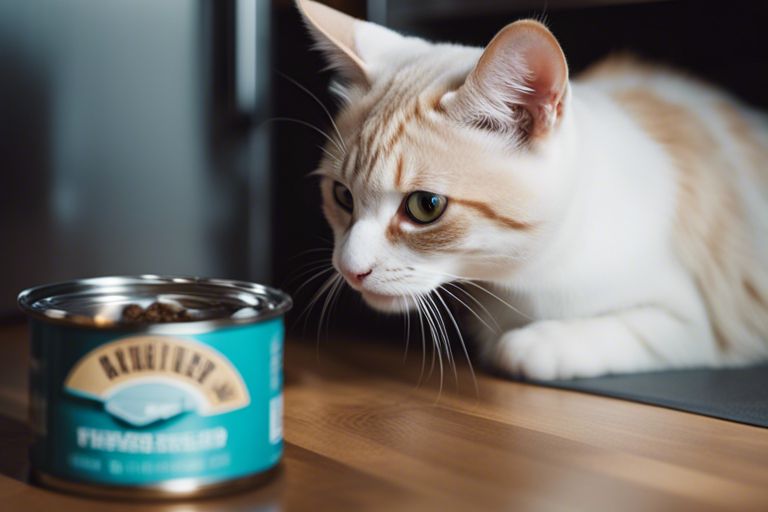
Maintaining a Healthy Diet Post-Transition
How to Establish a Long-Term Healthy Eating Routine
Healthy eating habits need to be cultivated over time to ensure your cat maintains a balanced diet. Once you have successfully transitioned your cat to the new diet, it is necessary to establish a routine that includes feeding at the same times each day and providing fresh water. Cats thrive on consistency, so sticking to a regular feeding schedule will help them adjust and continue to enjoy their food.
Introducing variety into your cat’s diet can also be beneficial. Offer a mix of wet and dry food, and include occasional treats in moderation. This variety not only keeps mealtime interesting for your cat but also helps provide a range of nutrients for their overall health.
The Importance of Regular Check-ups and Adjusting the Diet as Needed
Diet plays a crucial role in the overall health and well-being of your cat. Regular check-ups with your veterinarian are necessary to monitor your cat’s weight, body condition, and any potential health issues. Your vet can provide guidance on whether your cat’s current diet is meeting their nutritional needs or if adjustments are necessary.
Another important aspect of maintaining a healthy diet post-transition is the willingness to adapt. As your cat ages or if they develop any health conditions, their dietary requirements may change. It’s crucial to work closely with your vet to make any necessary adjustments to their diet to ensure they receive the appropriate nutrients for their age and health status.
Conclusion
Presently, transitioning your cat to a new diet successfully requires patience, consistency, and a gradual approach. By following the steps outlined in this guide, you can help your cat adjust to their new food without causing stress or digestive upset. Remember to consult with your veterinarian before making any significant changes to your cat’s diet, especially if they have any underlying health conditions.
To wrap things up, a smooth transition to a new diet can lead to better overall health and well-being for your cat. By taking the time to slowly introduce the new food, monitoring your cat’s reaction, and making adjustments as needed, you can ensure a successful transition for your feline companion. Keep in mind that every cat is unique, so what works for one may not work for another. Trust your instincts, follow your vet’s recommendations, and give your cat the time they need to adjust to their new diet.
FAQ
Q: Why is it important to transition my cat to a new diet slowly?
A: Cats can have sensitive digestive systems, and a sudden change in diet can lead to gastrointestinal upset. Transitioning slowly helps prevent digestive issues and allows your cat to adjust to the new food.
Q: How long should the transition to a new diet take?
A: Transitioning your cat to a new diet should generally take about 7-10 days. This gradual process gives your cat’s digestive system time to adapt to the new food and reduces the chances of stomach upset.
Q: What are the steps to successfully transition my cat to a new diet?
A: Start by mixing a small amount of the new food with your cat’s current food, gradually increasing the ratio of new to old food over 7-10 days. Monitor your cat for any signs of digestive issues or aversion to the new food during this transition period.
Q: What should I do if my cat refuses to eat the new food during the transition?
A: If your cat is refusing to eat the new food, try mixing in a small amount of a highly palatable food that your cat enjoys to encourage them to eat. You can also try offering the new food at different times or in different ways to entice your cat to try it.
Q: Are there any signs I should watch for during the transition period?
A: Keep an eye out for any signs of gastrointestinal upset such as vomiting, diarrhea, or changes in appetite. Other signs to watch for include lethargy, excessive grooming, or refusal to eat. If you notice any concerning symptoms, consult your veterinarian for guidance.
